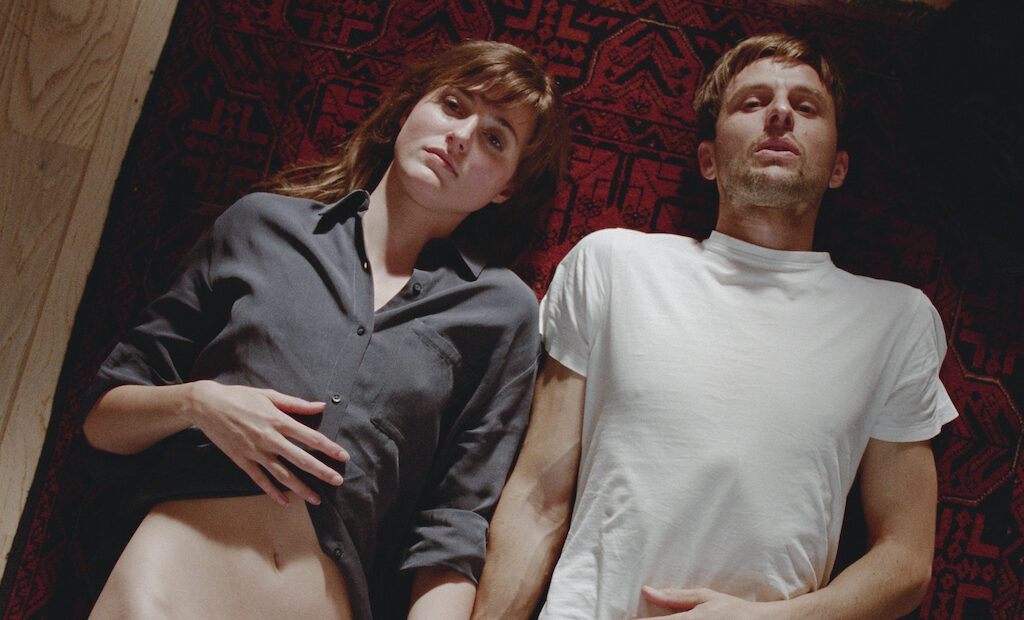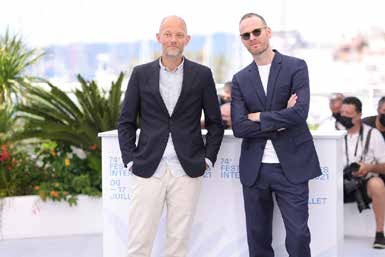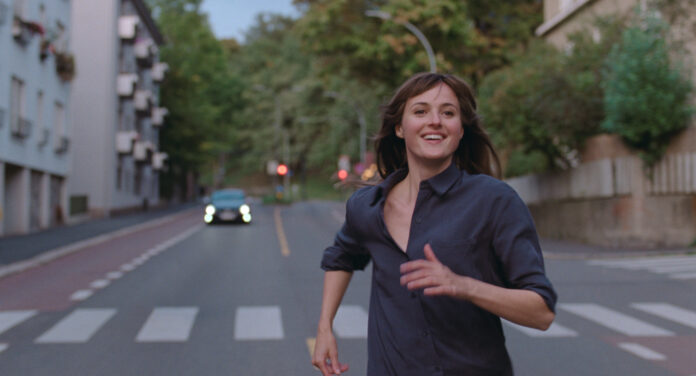(THIS ARTICLE IS MACHINE TRANSLATED by Google from Norwegian)
There was a historic buzz about the Norwegian participation in this year's film festival in Cannes. As many as two Norwegian films participated in the official program: Joachim Trier's feature film The world's worst man was selected for the main competition and The innocent by Eskil Vogt for the prestigious side program Un Certain Regard.
Vogt is also a screenwriter The world's worst man together with Trier, as he has been in all the director's feature films. Trier (and co-author Vogt) also participated in the main competition in Cannes in 2015 with Louder than bombs, which was then the first Norwegian-produced feature film in the main competition since Anja Breiens Arven in 1979. (In the meantime, however, four Norwegian short films have been selected for the main competition, including Bobbie Peers' Sniffer, who in 2006 won Norway's first Palme d'Or in this format.)
During the award ceremony, Renate Reinsve was awarded the prize for best female actress for the leading role in The world's worst man, and was one of the first Norwegian actors to win an award at the important festival.
Capital trilogy
Nor is it an exaggeration to say that The world's worst man was among the very best films in this year's main competition. The film ends what has become Trier's Oslo trilogy, which also consists of the debut film Recovery (2006) and the subsequent Oslo, 31. August (2011). Such categorizations can undeniably appear both glued and self-assured, especially when used about films that were not originally intended to be included in any trilogy. In this case, however, it feels just right. The most obvious reason is the significant role Oslo plays in all three of these films, but just as important is their formal and thematic kinship.
The world's worst man returns in many ways to the playful and experimental form that is particularly marked Recovery, where it jumps in time and associations with clear inspiration from the new wave in French film in the 50s and 60s. It should be emphasized, however, that these features are found in all of Trier's five feature films to date, albeit more subdued in the other films.

Director Joachim Trier
Norway
Such as its French title Julie (in 12 chapters) reveals, the new film tells the story of Julie (Reinsve) through 12 chapters, as well as a prologue and an epilogue. In a humorous way, we are explained that Julie, who is in her late twenties, has dropped out of several different studies and is struggling to decide what she wants in this life. She is in a relationship with the cartoonist Aksel (Anders Danielsen Lie), who is in her forties and talks about having children, but coincidences and impulsive decisions lead her to eventually be drawn to her peer Eivind (Herbert Nordrum).
The world's worst man also contains much of the humor that characterized Recovery, and has even been described as a romantic comedy. However, there is a genre classification that can be discussed. The film is light in tone, and basically appears as a cleaner comedy than the debut film. Some distance into the action, however, a seriousness occurs more in line with it (to an even greater degree than Recovery) melancholy and thoughtful Oslo, 31. August. This change of tone does not only help to connect The world's worst man to the trilogy as a whole, but make it a moving film experience that stays with you long after the end of the screening.
Play with conventions
Like Recovery the film uses an external narrator, who not least guides us through many of the film's digressions and anecdotes. Where the debut film – which was about two male budding writers – had a male narrator voice, this one is in The world's worst man fittingly a woman (read by Ine Jansen).
"Voice over" is still considered by many to be an emergency solution, and it has been said that the narrative grip should only be used when you do not really need it. In some sequences, the narrator retells in The world's worst man what the characters say, in parallel with hearing them pronounce more or less the same – almost like an ironic comment precisely that the narrator's voice is strictly speaking not needed. Nevertheless, of course, the narrator adds voice noe.
Life has become serious, even for the privileged – and for those who are reluctant to make the most serious choices.
Here, the use of "voice over" is one of several elements in a surplus narrative style, which uses the vast majority of the film medium's tools with playfulness and elegance. The narrator's voice reminds the spectator that what we see is one film, without necessarily acting like any pure Brechtian Paint inhibition effect. This is partly due to the fact that we as the audience have become accustomed to postmodern, self-reflexive grips in film, but also Trier and Vogt's abilities to create empathy, no matter how much they play with the media's conventions and possibilities.
Exemplary specifically
To return to the place that has given the trilogy its loose name, all three of these films depict the capital with an authenticity, a presence and a poesi which makes it more than just scenery for the action.
In my review of Itonje Søimer Guttormsen's feature film debut gritt Earlier this year, I praised the film for its authentic portrayal of specific, recognizable (art) environments. At the same time, I came with a sigh of relief that this type of environmental description has been missed in Norwegian film, where the characters' socio-cultural affiliation is often vague and / or general. However, I pointed to Trier's Oslo films as very honorable exceptions in that respect.
At the press conference for The world's worst man i Cannes , Joachim Trier himself emphasized being specific as something he searches for in all stages of his films. It has almost become a cliché, but no less true that the specific tends to create universal appeal. In the use of Oslo as location for these three films, the western edge of the city is most central to Trier's cinematic universe. It follows that the films are about people who must be said to be privileged. If it should in itself be an objection, it can be held against large parts of the films made in this country – but I do not think there is any particularly relevant criticism of Trier's films.
In all three films, the capital is portrayed with an authenticity, a presence and a poetry that makes it more than just scenery.
Life has become serious, even for the privileged – and for those who are reluctant to make the most serious choices. The world's worst man is about life choices and life coincidences, and about how difficult it can be to determine that something good is there Best - not least when you have many opportunities. And that you do not always know how to appreciate what you has. Here, form and content merge into a higher unity, in that the associative style expression reinforces the emphasis on both choices and coincidences – and how they affect each other.
The specific environmental and character portrayals create credibility and identification, in a film that, like Recovery og Oslo, 31. August can be read as a generational portrait. At the same time, these films deal with existential themes that concern many, albeit perhaps especially at the age portrayed, of which being privileged is not the most prominent.
World class
Now that we have devoted a lot of space to Joachim Trier's film (s), it should not be considered as a passing of Eskil vogt, who has been an essential contributor to all of Trier's feature films. In addition, he was selected for the Cannes festival with his second feature film as director.

Der Vogt's own debut film Blind contained many of the same experimental narrative elements as the trilogy, his new film is a supernatural horror – and thus most closely related to Trier's previous feature film Thelma. The innocent is not, however, a distinctly conventional horror film, but an exploration of children's ability to enter their own worlds, in which adults can never fully participate. er it a horror – and an elegant, disturbing and cleverly told such.
When both The world's worst man og The innocent has made a name for itself at the world's most important film festival, it is a confirmation that genre affiliation does not have to stand in opposition to artistic distinctiveness. And far more important: These two Norwegian filmmakers are, so to speak, world-class, with many fascinating features that bind their films together.
The innocent has its Norwegian cinema premiere on 3 September.
The world's worst man has its Norwegian cinema premiere on 15 October.


